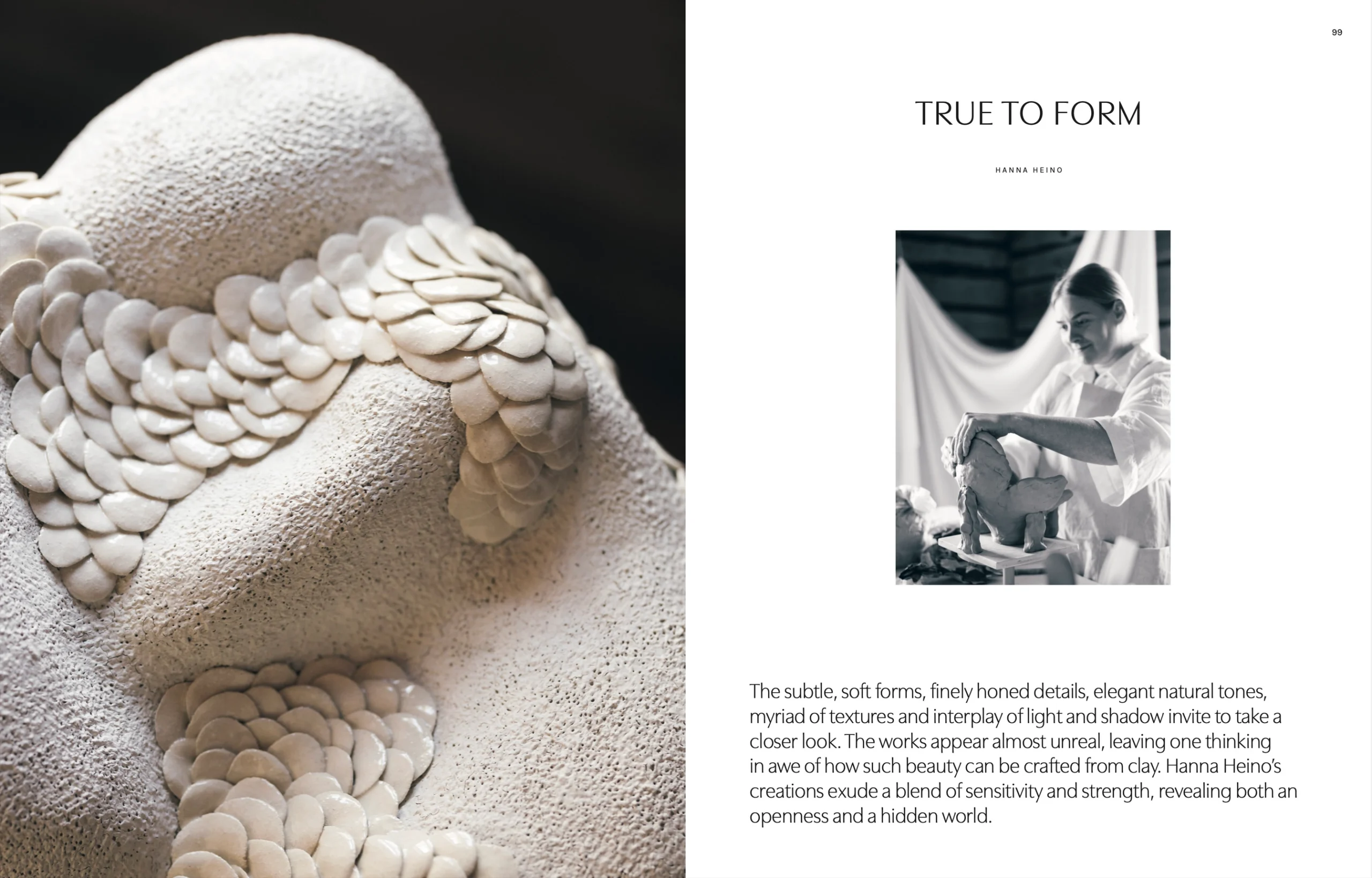Art has always been a powerful form of expression, and clay vertue stands as a testament to the boundless creativity that can emerge from the simplest of materials. Imagine taking a lump of earth and transforming it into something extraordinary. Clay vertue isn't just about molding clay; it's about crafting stories, emotions, and experiences. In this article, we'll dive deep into the world of clay vertue and explore how it shapes the creative landscape.
As we navigate through this journey, we'll uncover the fascinating history behind clay vertue, its techniques, and how it continues to inspire artists around the globe. Whether you're an aspiring artist or simply someone who appreciates the beauty of craftsmanship, this article will offer insights that you won't want to miss.
So grab a cup of coffee or tea, and let's embark on this artistic adventure together. Trust me, by the end of this read, you'll have a newfound appreciation for the incredible world of clay vertue and all the possibilities it holds.
- Jameliz Smith Nudes The Untold Story And Why It Matters
- Jameliz Benitez Leaked The Untold Story Behind The Headlines
Understanding Clay Vertue: A Brief Overview
Clay vertue is more than just a material; it’s a medium that breathes life into ideas. At its core, clay vertue involves shaping and firing clay to create intricate designs, sculptures, and functional pieces. But what makes it truly special? Well, it’s the way it connects us to our roots, allowing us to express ourselves in ways that transcend words.
What Makes Clay Vertue Unique?
Here are a few reasons why clay vertue stands out in the world of art:
- Versatility: You can create anything from delicate jewelry to large-scale installations.
- Connection to Nature: Working with clay allows artists to feel grounded and connected to the earth.
- Therapeutic Benefits: Many find joy and peace in the process of sculpting, making it a great stress reliever.
- Endless Possibilities: The limits are only as far as your imagination can take you.
Clay vertue isn’t just about creating objects; it’s about exploring the depths of your creativity and letting your inner artist shine.
- Emma Anturin Age A Deep Dive Into The Life Journey And Influence
- Subhashree Viral Video The Untold Story Behind The Sensation
The History of Clay Vertue
To truly understand clay vertue, we need to look back at its rich history. Humans have been working with clay for thousands of years, dating back to ancient civilizations. From the pottery of Mesopotamia to the intricate ceramics of China, clay has played a pivotal role in shaping human culture.
Key Milestones in Clay Vertue
Let’s take a quick look at some of the most significant moments in the history of clay vertue:
- Ancient Mesopotamia: The invention of the potter's wheel revolutionized clay crafting.
- Chinese Ceramics: The creation of porcelain marked a turning point in clay vertue.
- Medieval Europe: Stained glass and clay tiles became popular during this era.
- Modern Times: Today, clay vertue continues to evolve, blending traditional techniques with contemporary styles.
Each era brought its own unique contribution to the art form, ensuring that clay vertue remains relevant and inspiring.
Techniques in Clay Vertue
Now that we’ve covered the history, let’s talk about the techniques that define clay vertue. Whether you’re a beginner or a seasoned artist, understanding these methods can elevate your work to the next level.
Popular Clay Vertue Techniques
Here are some of the most common techniques used in clay vertue:
- Hand Building: This technique involves shaping clay by hand, often using methods like pinching, coiling, and slab building.
- Pottery Wheel: A must-know for any aspiring potter, the wheel allows for symmetrical and precise creations.
- Sculpting: Ideal for creating figurines and other detailed works, sculpting gives artists the freedom to explore complex forms.
- Glazing: Adding color and texture through glazing can transform a plain piece into a masterpiece.
Mastering these techniques takes practice, but the results are always worth it. Each method offers its own set of challenges and rewards, making clay vertue a dynamic and ever-evolving art form.
Clay Vertue in Modern Art
In today’s world, clay vertue continues to thrive, inspiring artists to push boundaries and experiment with new ideas. From minimalist designs to bold, avant-garde pieces, the possibilities are endless.
How Clay Vertue Fits into Contemporary Art
Modern artists are redefining clay vertue by incorporating it into mixed media works and installations. Some even combine digital technology with traditional techniques to create hybrid pieces that challenge conventional notions of art.
For instance, artist Jane Doe uses 3D printing alongside hand-building to create sculptures that blur the line between the digital and the physical. Her work is a testament to the adaptability and versatility of clay vertue in the modern age.
Tools and Materials for Clay Vertue
Every great artist needs the right tools, and clay vertue is no exception. From basic supplies to advanced equipment, having the right materials can make all the difference in your creative journey.
Essential Tools for Clay Vertue
Here’s a list of must-have tools for anyone interested in clay vertue:
- Clay: Choose high-quality clay suited to your project.
- Pottery Wheel: Essential for creating symmetrical pieces.
- Tools: Wire cutters, ribs, sponges, and other tools help refine your work.
- Kiln: Necessary for firing your creations to achieve durability and color.
Investing in quality tools can enhance your experience and improve the quality of your work. Don’t be afraid to experiment with different materials to find what works best for you.
The Therapeutic Benefits of Clay Vertue
Clay vertue isn’t just about creating beautiful objects; it’s also about nurturing your mental well-being. Many artists find solace in the meditative process of working with clay, making it an excellent form of therapy.
Why Clay Vertue is Good for Your Mind
Here are a few ways clay vertue can benefit your mental health:
- Mindfulness: Focusing on the tactile nature of clay helps you stay present.
- Stress Relief: The repetitive motions involved in shaping clay can be incredibly calming.
- Creative Outlet: Expressing yourself through art can be a powerful way to process emotions.
Whether you’re dealing with stress, anxiety, or just need a break from the hustle and bustle of daily life, clay vertue offers a peaceful escape.
Clay Vertue Around the World
Art knows no borders, and clay vertue is celebrated in cultures all over the globe. From traditional crafts to modern innovations, each region brings its own unique perspective to the art form.
Global Influences on Clay Vertue
Let’s explore how different parts of the world have shaped clay vertue:
- Africa: Known for vibrant patterns and functional designs.
- Mexico: Talavera pottery showcases intricate details and bold colors.
- Japan: The art of raku firing produces stunning, one-of-a-kind pieces.
- Europe: Fine porcelain and stoneware reflect elegance and sophistication.
These diverse influences highlight the universal appeal of clay vertue and its ability to connect people across cultures.
Challenges in Clay Vertue
Like any art form, clay vertue comes with its own set of challenges. From technical difficulties to creative blocks, artists must navigate these obstacles to achieve success.
Common Challenges in Clay Vertue
Here are some of the most common challenges faced by clay vertue artists:
- Cracking: Understanding how to prevent cracks during the drying and firing process.
- Glazing Issues: Achieving the desired finish can sometimes be tricky.
- Creative Blocks: Finding inspiration when you feel stuck.
Overcoming these challenges requires patience, practice, and a willingness to learn. Every mistake is an opportunity to grow, and every triumph is a testament to your dedication.
Clay Vertue for Beginners
If you’re new to clay vertue, don’t worry! There are plenty of resources and tips to help you get started. Whether you’re taking a class or teaching yourself, the key is to have fun and enjoy the process.
Tips for Beginners
Here are some tips to help you embark on your clay vertue journey:
- Start Simple: Begin with basic shapes and techniques before moving on to more complex projects.
- Practice Regularly: The more you practice, the better you’ll become.
- Experiment: Don’t be afraid to try new things and make mistakes.
Remember, clay vertue is a journey, not a destination. Embrace every step of the process, and you’ll be amazed at what you can achieve.
Conclusion: Embrace the Art of Clay Vertue
In conclusion, clay vertue offers a world of possibilities for artists and enthusiasts alike. From its rich history to its modern applications, it continues to inspire and captivate those who engage with it. Whether you’re looking to create something beautiful, find peace in the creative process, or simply explore your artistic side, clay vertue has something to offer everyone.
So why not give it a try? Grab some clay, roll up your sleeves, and let your imagination run wild. Who knows? You might just discover a new passion that changes your life forever.
And don’t forget to share your thoughts and creations in the comments below. We’d love to hear about your clay vertue journey and how it’s impacting your life. Until next time, keep creating, keep exploring, and most importantly, keep believing in the power of art.
Table of Contents
Understanding Clay Vertue: A Brief Overview
What Makes Clay Vertue Unique?
Popular Clay Vertue Techniques
How Clay Vertue Fits into Contemporary Art
Tools and Materials for Clay Vertue
Essential Tools for Clay Vertue
The Therapeutic Benefits of Clay Vertue
Why Clay Vertue is Good for Your Mind
Global Influences on Clay Vertue
- Billie Eilish Rule 34 The Buzz The Facts And Everything You Need To Know
- Movie Rulz Your Ultimate Streaming Hub Unveiled


